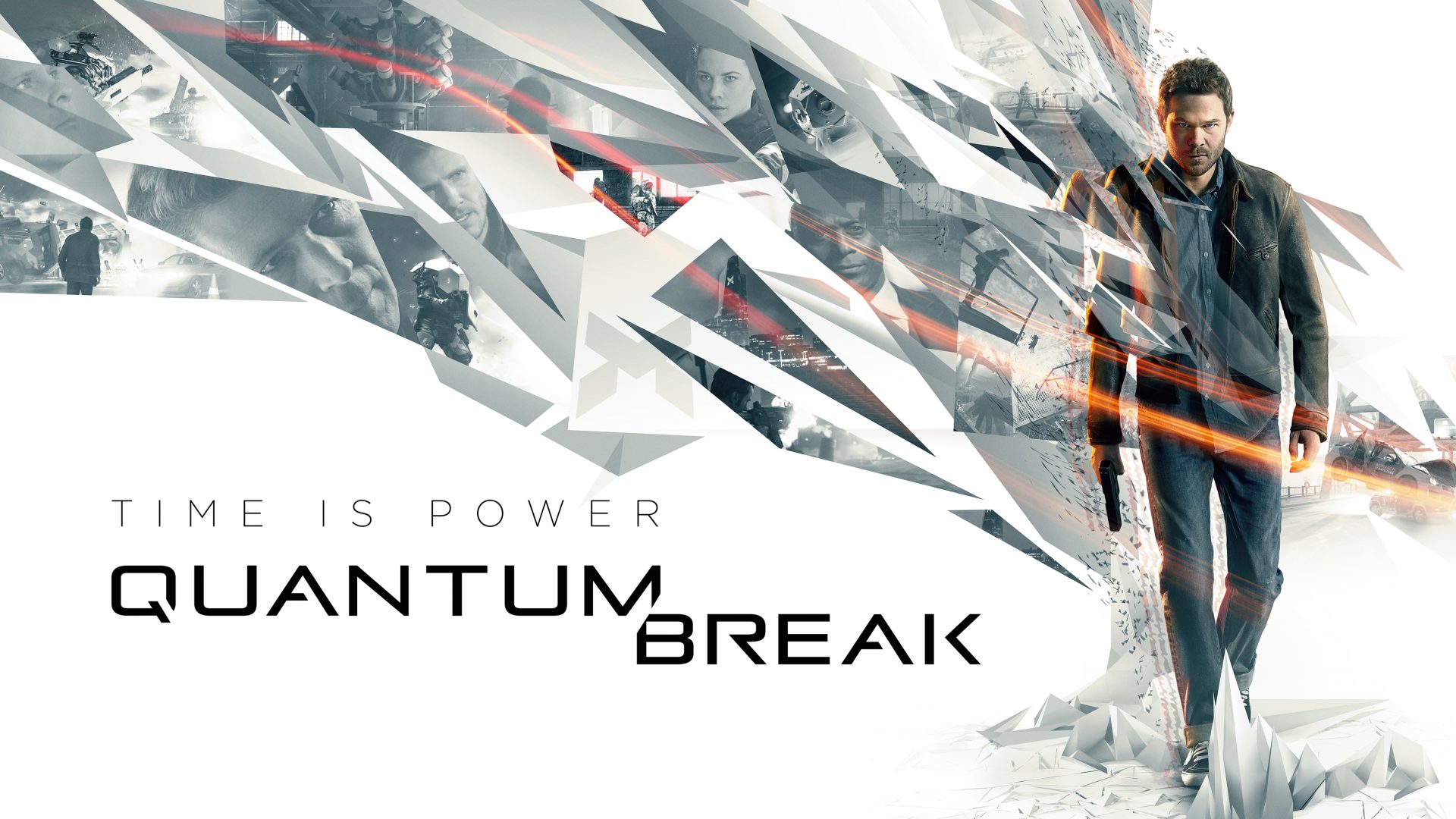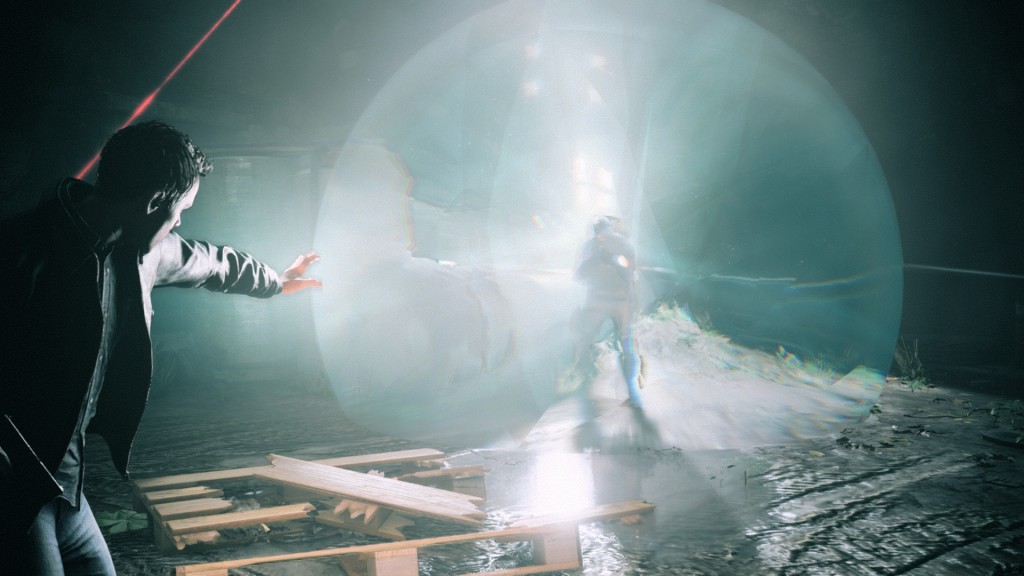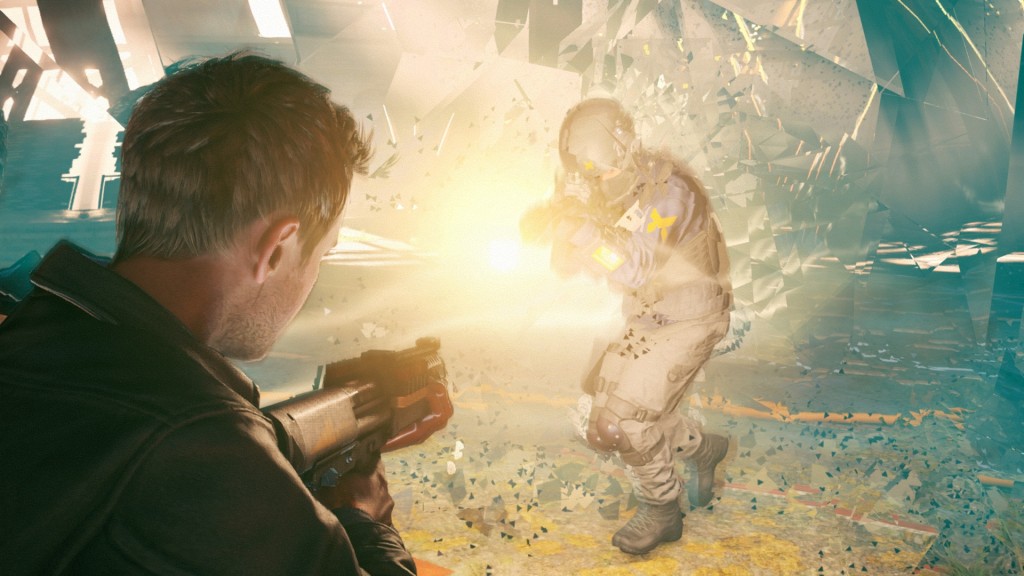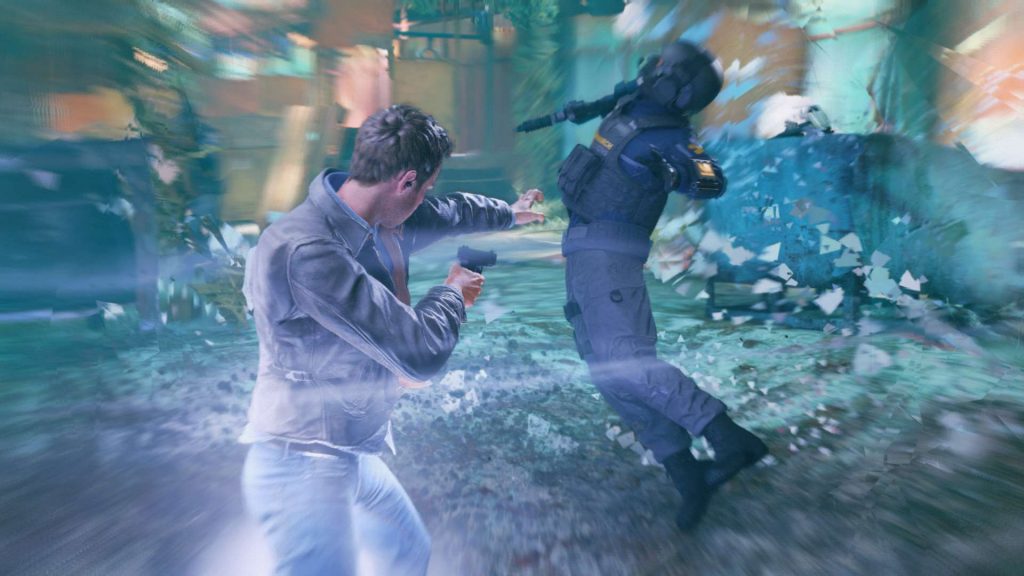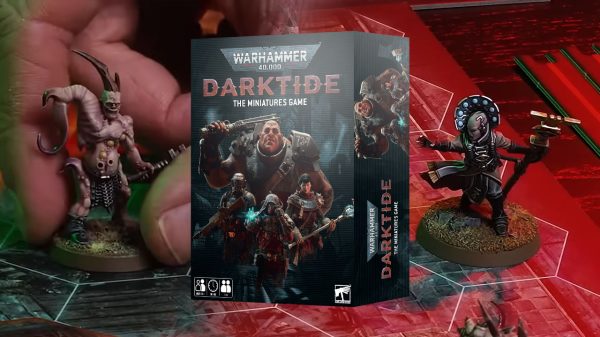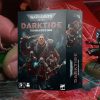When publishers and developers allow for review embargoes to lift several days before a game’s release, it’s usually a sign that both the publisher and developer are highly confident in their work. It’s a risky tactic that can yield excellent results or severe consequences – especially for a brand new IP. If the critical reception isn’t favourable, the new IP could be dead in the water before it even launches. However, the other side of coin is that the game lives up to its lofty expectations and that only increases the game’s hype. This is the situation we find ourselves in with Quantum Break, the brand new IP from Remedy Entertainment and Microsoft Studios. But which side of the coin represents the ambitious project from the Finnish-based developers?
Quantum Break is an interesting hybrid that fuses a video game and a TV show into one entertainment experience. It’s a concept that we haven’t seen done before, and it’s one that is brimming with potential for success or disaster. Unsurprisingly, Remedy’s innovation and execution is outstanding and the final result is an immersive, well-rounded and visually-stunning experience. After all, they are a developer whose name is synonymous with quality narrative and gameplay.
The game is a visual delight
Let’s first talk about the incredible visuals – Quantum Break looks stunning, particularly in the facial details of the characters, which are incredibly realistic and accurate (to the real life actors they’re based off). A lot has been made about the game’s frame rate and resolution, but none of that really matters as the game looks fantastic and performs flawlessly. The Microsoft exclusive (Xbox One and Windows 10) also shows off the processing power of the Xbox One console, as it is continuously rendering environment changes and time-bending effects make for an eye-catching display. One frequent time-bending effect that has a particularly impressive visual aspect is the Time Stutter, which is a moment when time briefly stops but some objects within it get stuck in an erratic rewind/play loop. As you walk through these Stutters it’s hard not to admire the graphical beauty and the level of detail both large and small that has gone into them.
The single-player game is set across five acts (with a TV show separating each act) in the not too distant future of October 2016 and puts you into the shoes of Jack Joyce, who is voiced and motion-captured by Shawn Ashmore of Animorphs fame (oh, and he was also in X-Men). Jack is invited back to his hometown of Riverport by his best friend, Paul Serene (Aidan Gillen – Game of Thrones), who has been working on a research project at Riverport University with Jack’s brother, William Joyce (Dominic Monaghan – Lord of the Rings). Serene unveils his time machine project to Jack, and asks him to assist in the maiden voyage of the machine. Naturally the experiment doesn’t go to plan and as a result Serene travels back in time and founds Monarch Solutions, a large corporation with an even larger thirst for power and control. Joyce receives time-bending abilities and a fracture in time has occurred. This fracture will only worsen with time and it will eventually lead to the end of time unless Jack can fix the fracture.
After the initial plot set-up you get your first hands-on with the game’s gameplay mechanics as you fight your way through waves of Monarch Solutions soldiers across the university campus. At its core, Quantum Break is a third-person shooter with action-adventure and cover-based elements mixed in for good measure. The shooting is relatively tight – you’ve got your typical arsenal of weaponry available (assault rifle, SMG, shotgun etc.), and your character’s movements are quite fluid. One of the game’s biggest boons is the automated cover system. Entering cover doesn’t require the push of a designated button, instead your character seamlessly enters and exits cover rather than feeling glued to the surface you’re seeking solace behind (à la Uncharted). The biggest gameplay stimulation comes when you’re given licence to use Joyce’s newly found array of time-manipulating powers as he discovers them one by one.
The first power you acquire is Time Vision. When activated it highlights all threats and interactive objects within your vicinity, enabling you to stay one step ahead of your pursuers. Next there is Time Stop, which is pretty self-explanatory – it allows you to stop time in a targeted area for a period of time – permitting you to pummel your frozen enemies with lead before they thaw out. There’s also Time Dodge – which allows you to scoot away at the speed of light, leaving your adversaries discombobulated as to your current position is a highly-effective power. It is redolent of the teleport function from Dishonored or the swoop manoeuvre from the recent Thief reboot. It helps alleviate the pressure of the target on your back for a brief period of time, or you can use it to surprise unsuspecting victims. The next power Jack unlocks is Time Shield, which allows Jack to put up a momentary shield and either go on the offensive or seek cover. The next power is probably my favourite: The Time Blast. With the Time Blast Joyce practically becomes Goku executing a Kamehameha – sending his victims sprawling through the air (actually, who do you think would win in a fight between mega-buff Goku and Jack Joyce?). The final time power is Time Rush, which lets you slow down time and sprint either from enemies or towards them in order to complete a take-down move. The use of your powers isn’t exclusive to combat; you will need to use some of these powers in order to advance through various sections of the game.
The most entertaining aspect of your time powers is that they can be pieced together to create a lethal combination that your victims won’t see coming. It’s a great way to mix up the gameplay and to avoid the game becoming another stale third-person shooter
Once each power has been used it needs to cool down over a short period of time; there are only a handful of set pieces where you’ll be scrambling and waiting for it to recharge. Your powers can be upgraded throughout the campaign, and each power has either two or three stages to the upgrades depending on the power. Some upgrades such as Time Stop give you an extra use (so you have two time stops before it needs to recharge) or others such as Time Blast where an upgrade shortens the cooldown time. Upgrades are done by using a designated amount of Chronon sources, which can be found scattered throughout the game world. To ensure you don’t waste time looking for these, your controller (if you’re on Xbox) will vibrate and an on-screen indicator will flash when you’re in the vicinity of a Chronon source.
The most entertaining aspect of your time powers is that they can be pieced together to create a lethal combination that your victims won’t see coming. It’s a great way to mix up the game-play and to avoid the game becoming another stale third-person shooter, as the game does throw a plentiful amount of enemy waves at you throughout the campaign. There are a handful of enemy classes and as you would expect some of them pose more of a challenge than others. The enemy AI is surprisingly good, especially on the harder opponents such as those that can operate within time stutters (when time has stopped), and the game throws up quite a challenge on hard mode. For my hard mode play-through I disabled aim assist for both weapons and time powers and this made the game quite tough in a few areas, especially those with heavily armoured Monarch soldiers and during the final showdown.
Quantum Break’s core concept is time travel and it is one that is seldom used in AAA games, or indeed any game. It is partially for this reason why the premise evokes such intrigue. Sure, other common sub-concepts such as revenge, betrayal and loss are all here, but it’s the setting they’re being used in which creates a sense of originality. All of these elements are mixed together with interesting characters and exceptional dialogue (both written and executed) to form a story that is both exciting and engaging from start to finish.
Remedy promised us branching story-lines and they have delivered on said promise. But while some parts of the story are set in stone, other parts form a blank canvas, and your choices paint the effects they have on the narrative. There are major decisions that have a direct impact on the story in both the TV show and game known as Junctions. At each Junction you take control of Paul Serene and you have to make a choice. One path leads down road A and the other down road B, and whatever choice you make will have a lasting impact. In my two asymmetrical play-throughs I ended up with two vastly different outcomes and it is touches like this that add some level of replay-ability to what is primarily a linear game. The smaller effects on the story-line are done through ‘Quantum Ripples’, these are items that can be interacted with during the game-play that unlock additional content within the live-action episodes.
Quantum ripples aren’t the only items strewn across Riverport, in fact a large number of narrative-related items are hidden (in plain sight). These come in the form of emails, video and voice recordings and miscellaneous reports and notes. While it is a nice touch to have that added layer of information about the setting and characters, reading them all, especially the emails, became rather humdrum and in the end I merely inspected the emails to tick it off the collectables list.
The TV episodes are excellently produced and the pacing of the shows themselves is superb. There’s a great balance between action and drama that gets you hooked early doors, and most importantly they don’t come off as filler content. In fact, I found myself wanting more of them.
Let’s now discuss the game’s other half – its live-action TV episodes. After every Junction (which is after each act) you will be treated to an approximately twenty minute episode that focuses on the goings-on of several Monarch Solutions employees and their role in the greater scheme of things. My initial expectations for the TV show weren’t high, and I also had trepidation’s that they would jar the pacing of the game (going from live-action to video game), but thankfully I was sorely mistaken. The TV episodes are excellently produced and the pacing of the shows themselves is superb. There’s a great balance between action and drama that gets you hooked early doors, and most importantly they don’t come off as filler content. In fact, I found myself wanting more of them. They never disconnect you from the game-play experience, and if anything it augments the experience, giving you a deeper understanding of the world and its characters. The connection between the game and episodes is fantastic; it’s hard to say what aspect I enjoyed more, the video game or the live-action episodes. Between the two elements, my first play-through clocked in at around 10 hours, and that was me watching every cut-scene and hunting for every collectable.
As mentioned earlier, the delivery of the dialogue and the performance of the cast is fantastic, as you would hope with several high-profile actors featuring in the episodes. Two characters that were highlights for me performance-wise were Serene’s right-hand man, Martin Hatch – played by Lance Reddick (The Wire) and Monarch computer wiz, Charlie Wincott – played by Marshall Allman (Prison Break). I don’t want to go into too much detail with the live-action episodes as you’re best off forming your own opinion (yes, that’s allowed). For those with curious natures, you can skip the live-action sequences if you wish, but in order to gain the full experience I highly recommend you watch them. If you do choose to skip them keep in mind that you will be missing out on parts of the game’s plot.
Lastly, even though I enjoyed watching the episodes, they exposed a potential killjoy for several people: the streaming. I have cable internet and I seldom have issues with streaming video content, but several times I had to sit through ‘content buffering’, which reminded me of my teenage anguish as I desperately tried to watch… videos… online. In fairness, only two of the eight episodes had issues, but it’s not me that I am worried about, it’s the multitude of people that have inadequate internet services (an all too familiar problem in Australia) that may have a sub-par experience. The only solution currently is to actually download the episodes that collectively will eat 75GB of your HDD. If you’re going to release a game that is heavily reliant on additional content, it needs to be accessible for every potential player. A more viable option would have been including installation discs with the game itself, but as they preach, digital is the future.
Final Thoughts
With Quantum Break, Remedy and Microsoft have set a new standard for storytelling experiences. Their game/TV show amalgam is a breath of fresh air in an industry that lacks the courage to pursue innovation, and it is a testament that new IPs can make an impact in a market saturated with franchises and yearly iterations. Quantum Break is everything you want from a single-player gaming experience; quality and fun game-play mechanics, an immersive story with excellent dialogue and characters and top-notch production values. Remedy Entertainment are now well and truly among the top echelon of developers.
Reviewed on Xbox One

- Remedy Entertainment
- Microsoft Studios
- Xbox One / PC
- April 5, 2016



Despite a childhood playing survival horrors, point and clicks and beat ’em ups, these days Zach tries to convince people that Homefront: The Revolution is a good game while pining for a sequel to The Order: 1886 and a live-action Treasure Planet film. Carlton, Burnley FC & SJ Sharks fan. Get around him on Twitter @tightinthejorts





